
NOTICE TO VIEWERS: This target was chosen by Teresa Frisch for the Wednesday night free webinar she holds on a bi-weekly basis. We at PSI use the targets she selects on this day so viewers will not wind up getting two different targets with the same set of coordinates. You can sign up for these free webinars at her web page under the option, "Online Classes & Discussions". Videos of all of Teresa's webinars are available on YouTube
TARGET 121107
HARVESTING CRANBERRIES
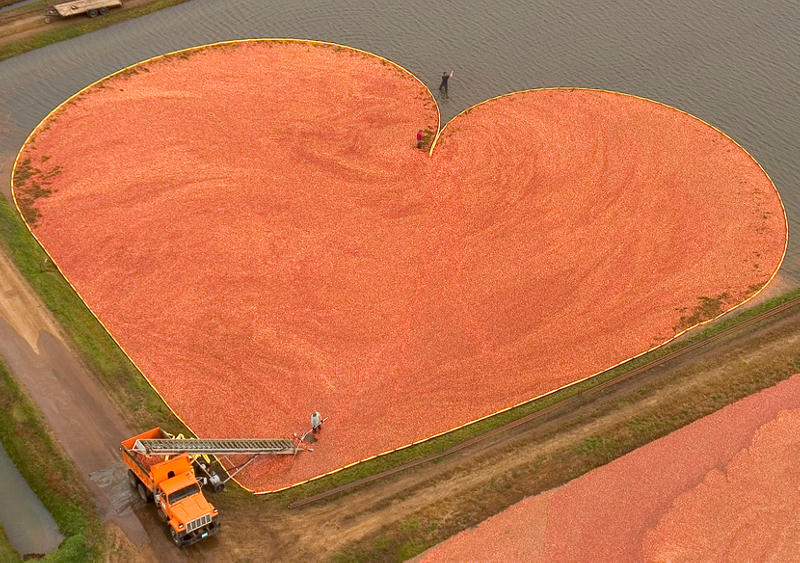
Corralling the berries into the truckEvery autumn, (usually from mid-September until around mid-November in the northern hemisphere and March through May in the southern hemisphere), cranberries reach their peak of color and flavor and are ready for harvesting. That's when our growers harvest millions of pounds of cranberries.

A cranberry bog is an area of soft, marshy ground with acid peat soil, usually near wetlands, where the cranberries grow on long-running vines. The land is extremely flat in order to have the vines at an even depth when it comes time to use a beater machine across the whole field to loosen the berries at harvest time.
To many people's surprise, the cranberry bog is kept unflooded during the growing season because the vines cannot grow and survive under water. The bogs are only flooded at harvest time, because the ripened berries will come off the vine when it is shaken, and float to the surface. So, the only time you will see the cranberries in water is at harvest time. The rest of the year, you will see only a field full of short vines. The water is a natural way to separate the berries from dirt, weeds, leaves,and any other thing that would otherwise be included in harvesting dry plants.
NOTE: For the sake of accuracy, there are also methods to "dry harvest" the berries, but those are not the subject of this tasking. If you want to look up information on that subject, put "dry cranberry harvest" into a search engine.
You can find cranberry bogs in the U.S. states of Massachusetts, New Jersey, Oregon, Washington, and Wisconsin, as well as in the Canadian provinces of British Columbia, New Brunswick, Ontario, Nova Scotia, Prince Edward Island, Newfoundland and Quebec. A small percentage of the world's cranberry supply is grown in southern Argentina and Chile, the Netherlands, and Eastern Europe. NOTE: Therefore, there is not a dowsing map for this target.
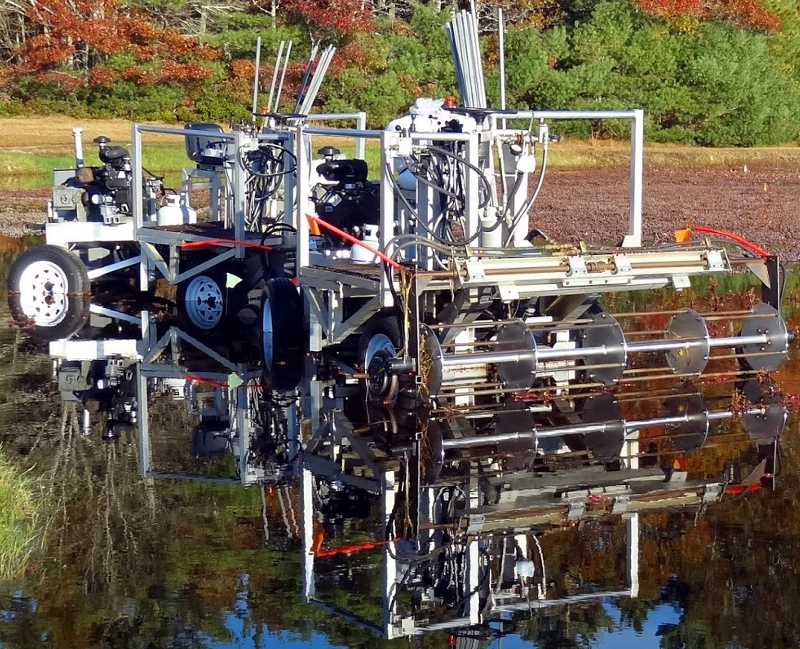
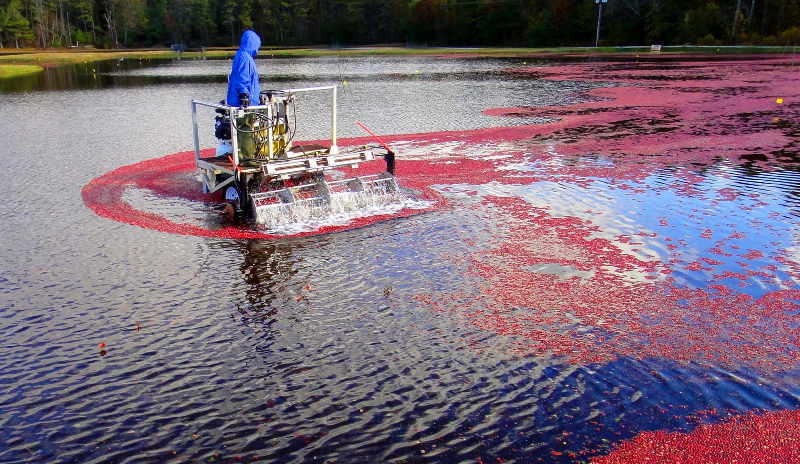
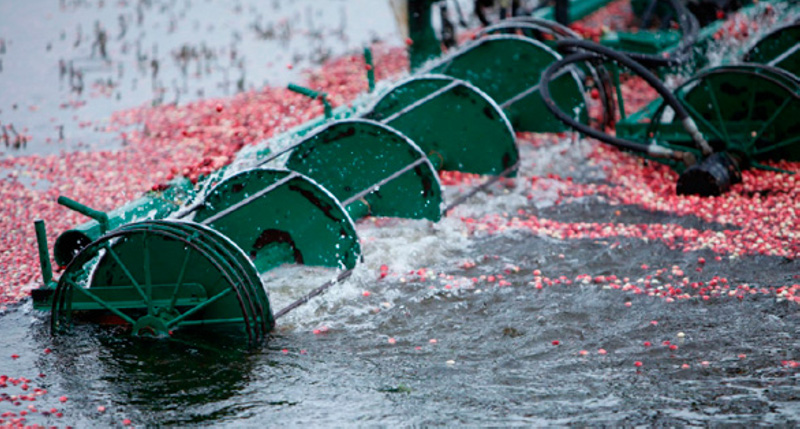
Beating the berries off the vinesAfter the field is flooded, a special machine is used to beat the vines just hard enough to knock the berries off the vines, but not hard enough to damage either the berriest or the vines.
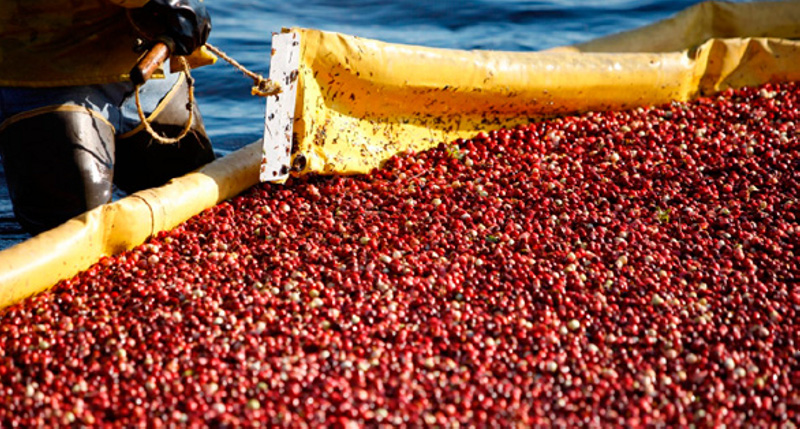
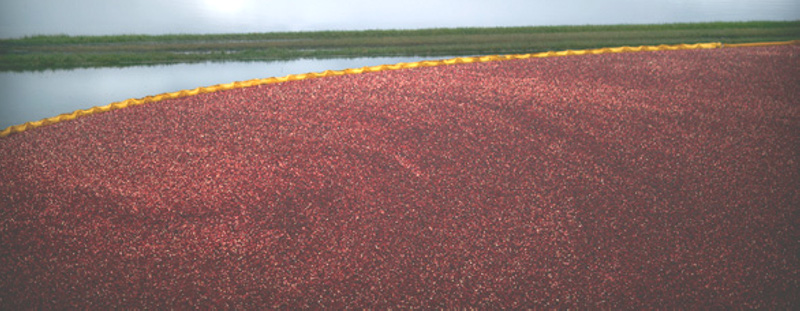
Corralling the berriesBy the time all the berries are off the vine, the entire bog is covered with a 1-berry thick layer of them. The workers then start at the edges of the bog and, using simple floating curtains, begin corralling the berries into a single floating mass.
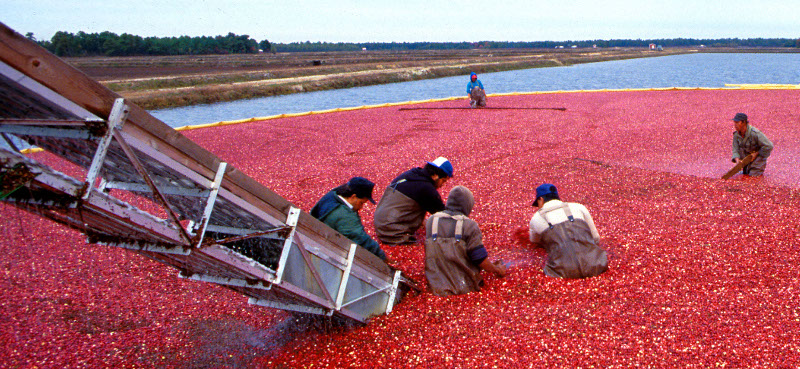
Berries are lifted by a conveyer belt
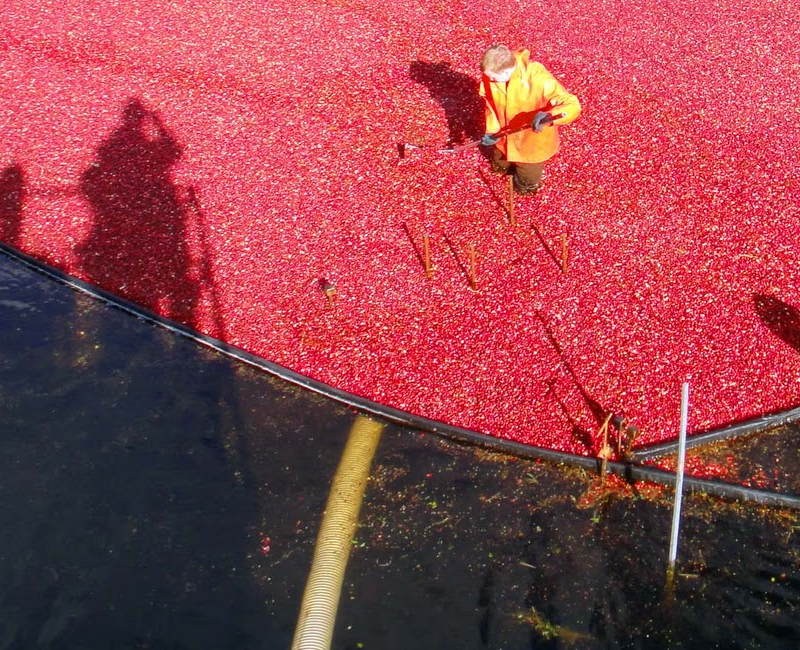
Or by an underwater vacuum hose.The berries are the lifted from the surface of the bog by one of two methods: by a conveyer belt or a vacuum hose from underneath.
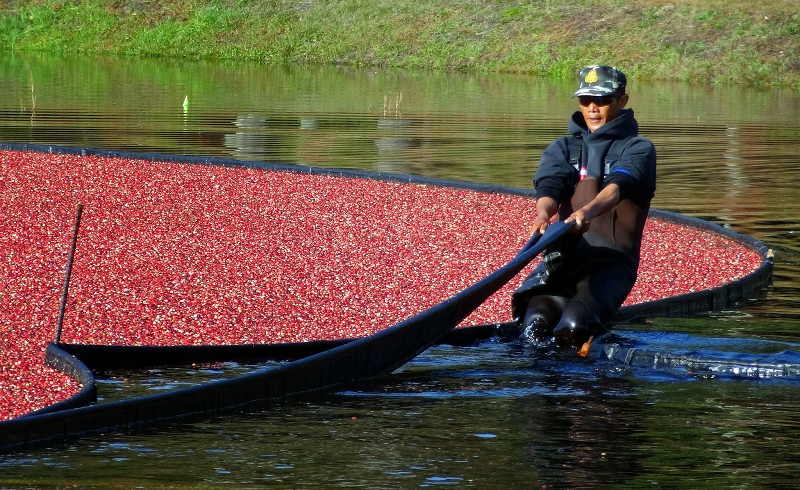
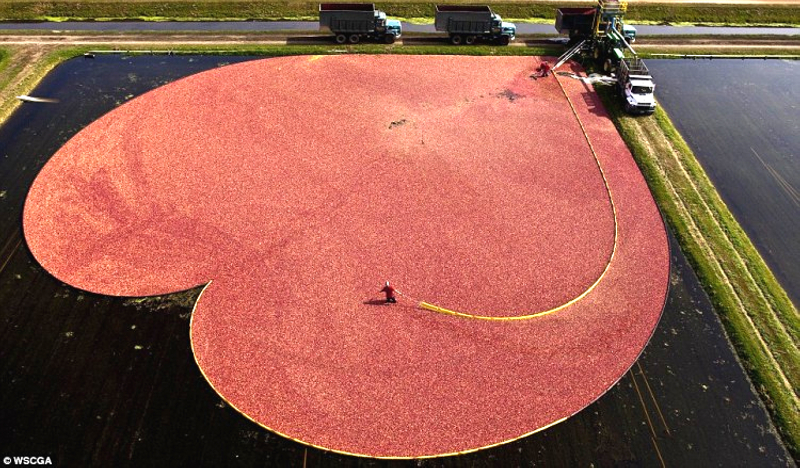
Tightening the corrall.Either way, the corrall around the rest of the berries must be tightened as the berries are taken out of the bog, in order to keep the retrieval at a constant rate.
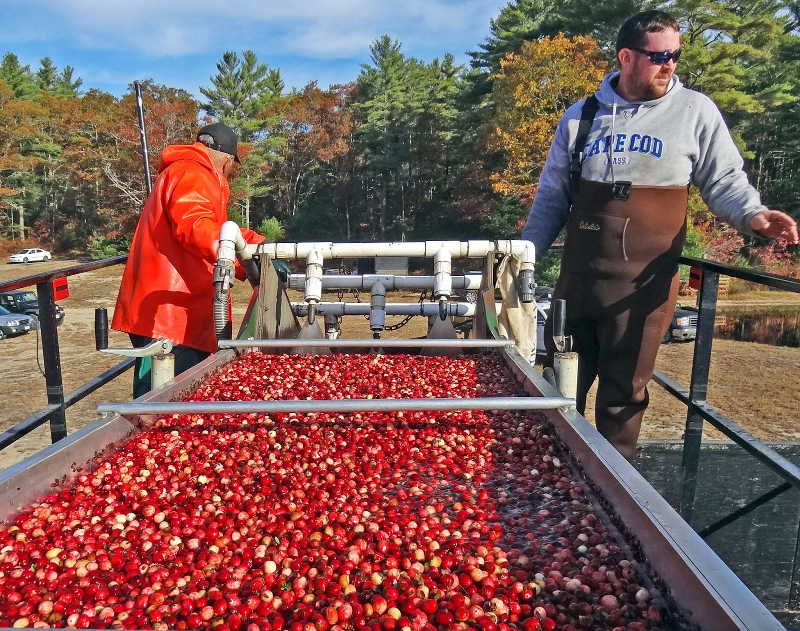
Up to the height of the waiting truck,
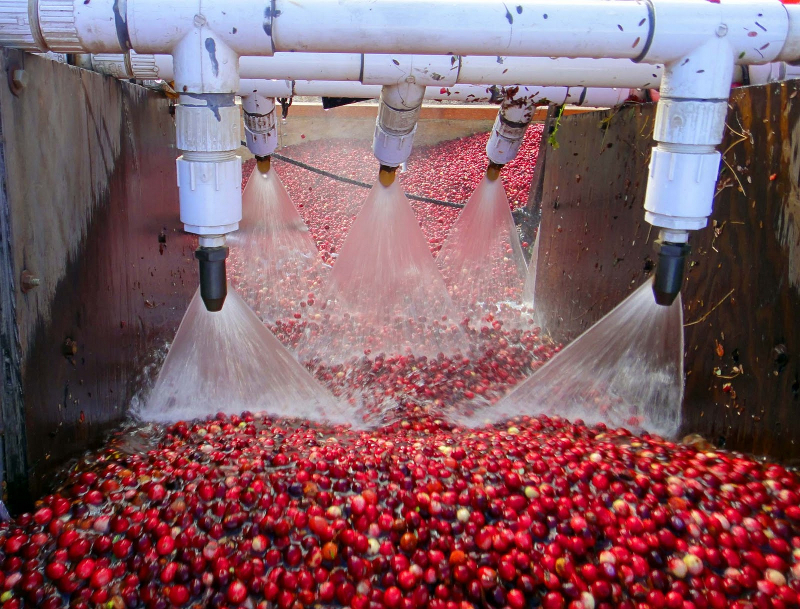
A quick rinse,
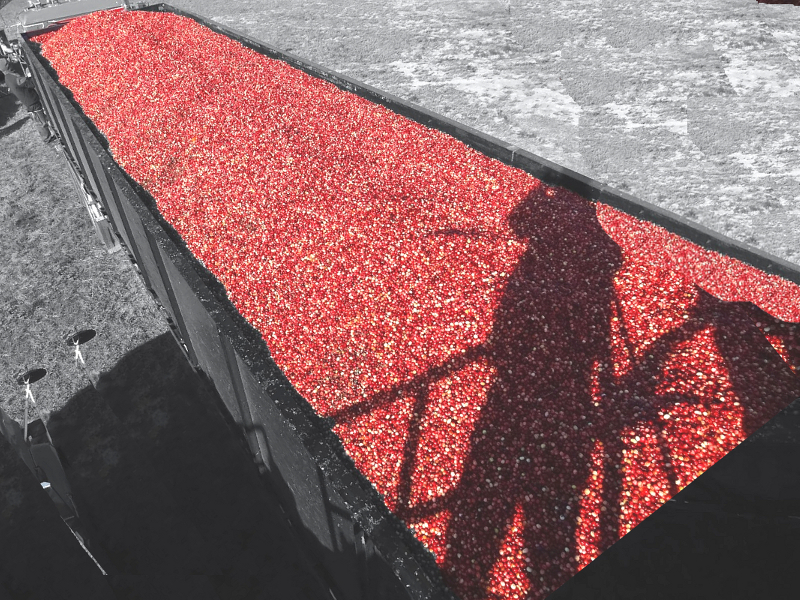
Loaded into the truck,
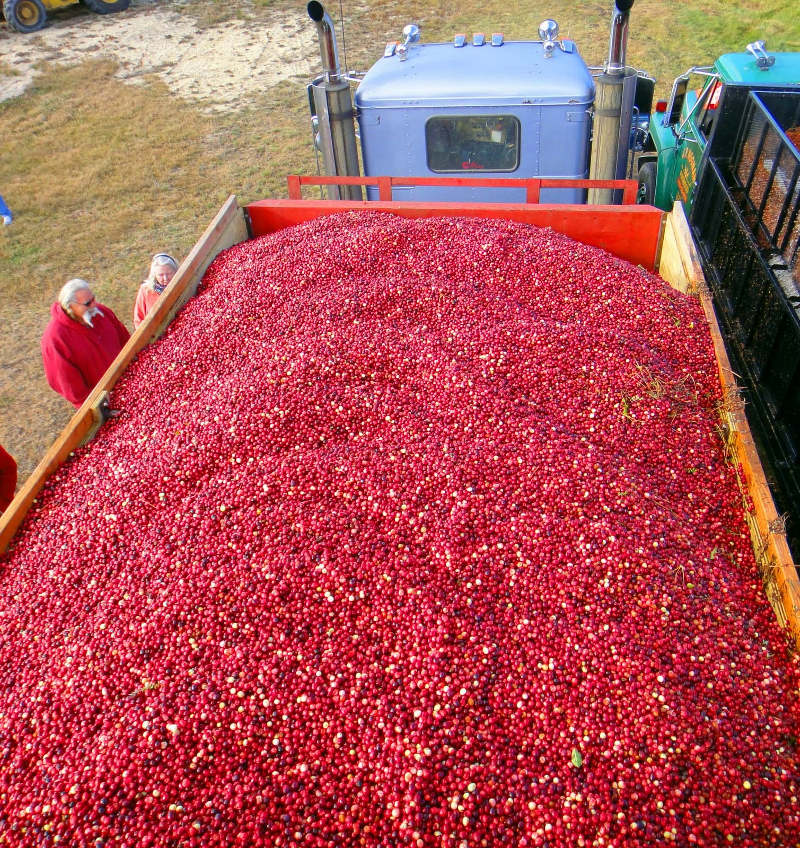
And off to market they go.
If you got impressions for which this feedback is insufficient, more information,
pictures and videos can be found at the following web sites:
Cranberries.org
Joe's Retirement Blog (lots of explanations)
HowStuffWorks.com
Ocean Spray corp web site
Many thanks to Teresa Frisch for this target.